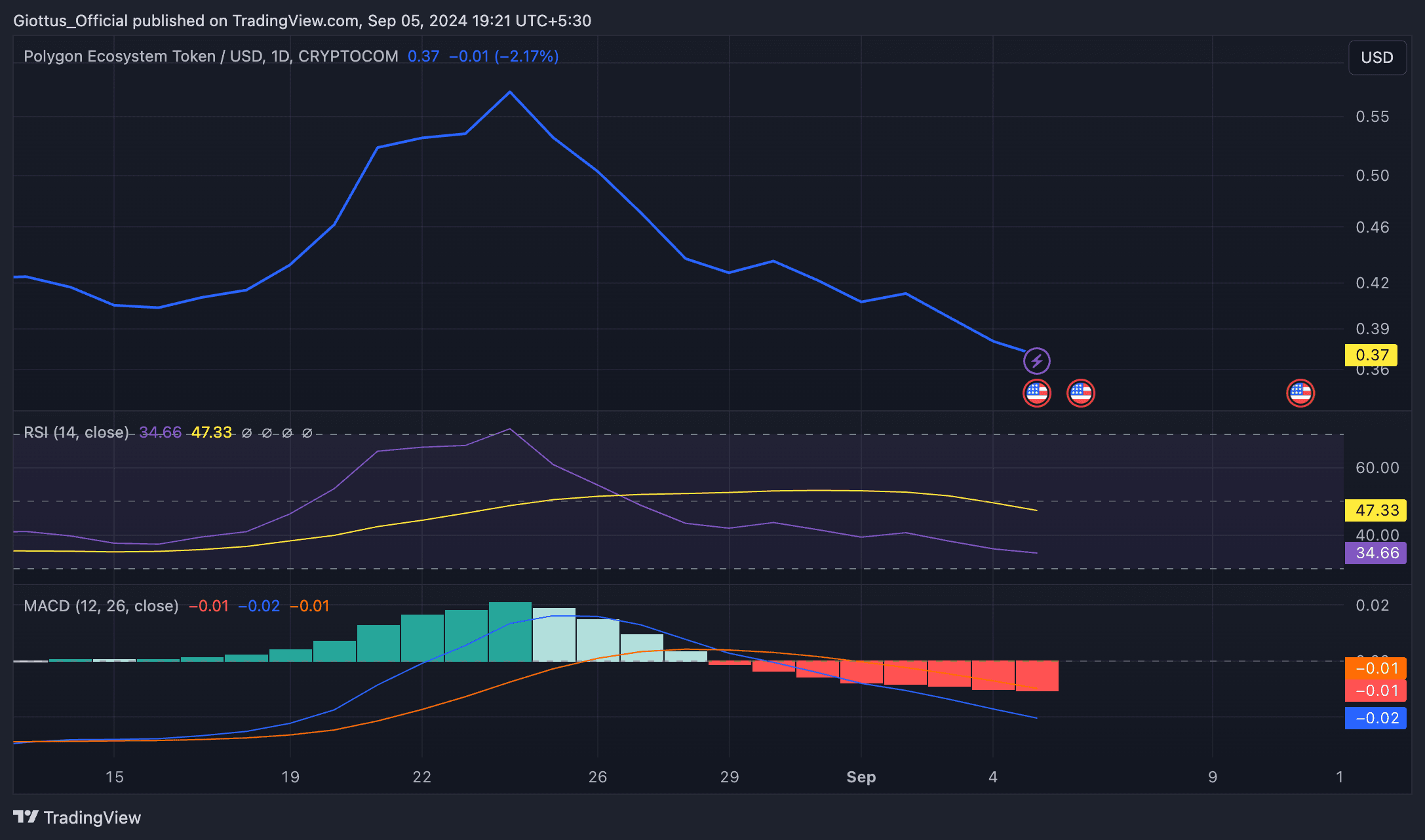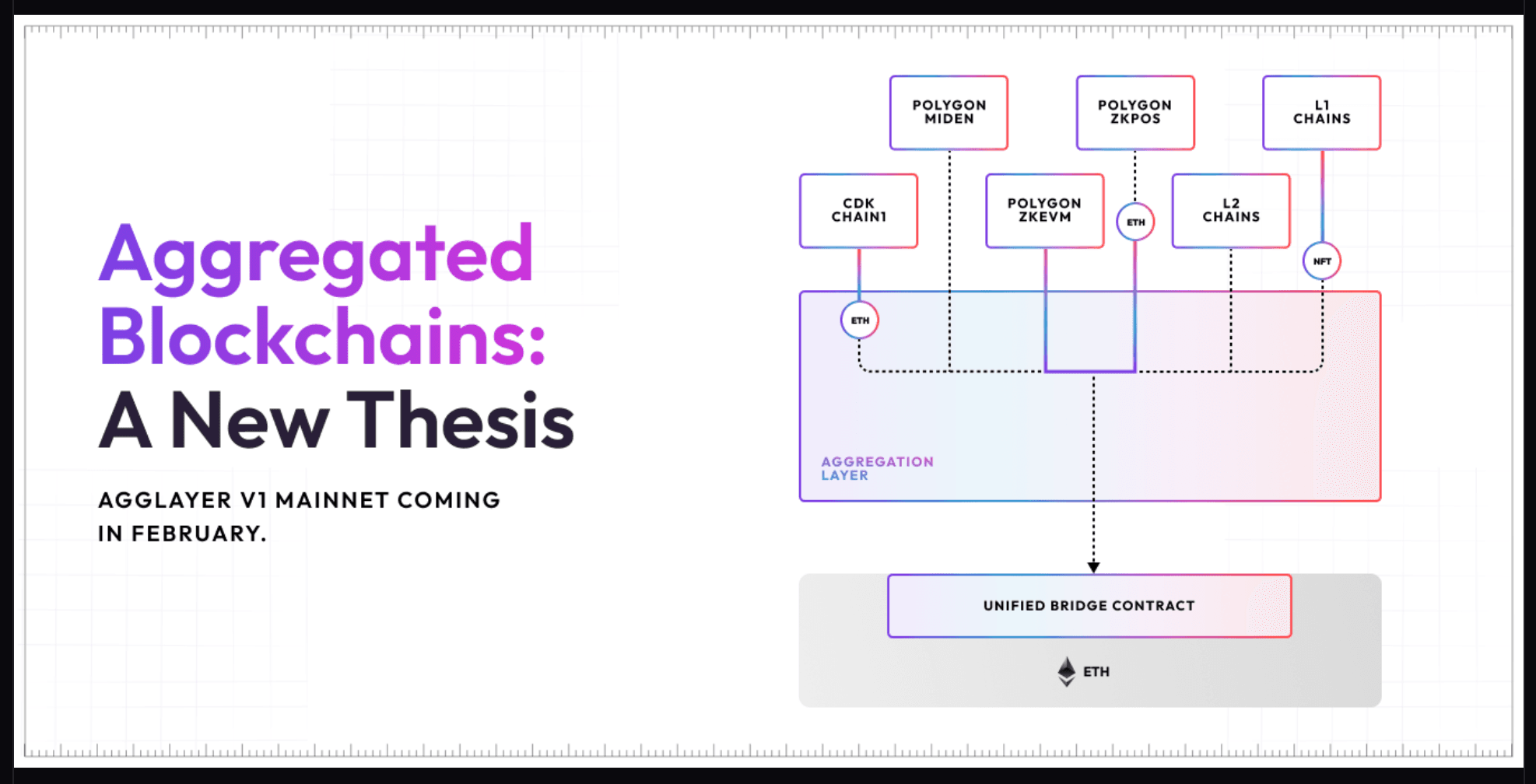On September 4, Polygon made a major upgrade to its network with the MATIC token transitioning to POL. This isn't just a rebrand but an actual upgrade that unlocks new features and benefits for the Polygon ecosystem. Here’s a look at what’s changing and what you need to know.
Polygon is a leader in zero-knowledge (ZK) technology, which allows faster and more secure transactions on the blockchain. Their goal is to create a unified network of blockchains (Layer 2s) that work together smoothly. The new POL token is part of this plan and will bring new utilities for users, validators (who help secure the network), and developers.
Key changes with the POL token
1. Same Staking and Gas Fee Roles: Just like MATIC, the POL token will be used for staking (which helps secure the network) and paying gas fees (transaction fees for using the network).
2. New Features: POL will also help with generating blocks, creating zero-knowledge proofs (boosting security), and joining data committees that help manage the network.
3. Token Emissions: POL will have an annual emission rate of 2%, which means 2% new tokens will be added each year. Half of this (1%) will go to validators (people who secure the network), and the other half will go to a community treasury to help fund future projects and growth.
4. More Network Security: In the future, POL will be used to secure many different blockchains, not just the main Polygon chain. This means people staking POL tokens will help secure multiple chains and could earn rewards from all of them.
Converting your MATIC to POL
The conversion from MATIC to POL is 1:1, meaning if you have 10 MATIC tokens, you should get 10 POL tokens after the upgrade.
What do you need to do?
It depends on where your MATIC tokens are stored:
• If your MATIC is on the Polygon network (POS chain): You don’t need to do anything. The upgrade will happen automatically.
• If your MATIC is on a centralized exchange: In most cases, the exchange will handle the upgrade for you. Do reach out to your exchange’s customer support to know more. Giottus will do the conversion for all its users.
• If your MATIC is on Ethereum Mainnet: You’ll need to manually upgrade your tokens through a portal provided by Polygon. Alternatively, you can bridge your tokens to the Polygon POS chain and let the upgrade happen automatically.
For Polygon zkEVM users: If you have MATIC on Polygon’s ZK rollup network, you’ll need to bridge your tokens back to Ethereum first, then upgrade them to POL through the portal.
What does this mean for the future?
The POL token will play a central role in Polygon’s ambitious plan to connect many blockchains together. The aggregation layer will help make blockchains feel like a single, unified system, making transactions faster and easier. POL will secure this new web of connected blockchains and provide rewards to those who stake it.
This upgrade will make Polygon’s ecosystem more powerful, especially for developers and users, and it could lead to more growth and innovation in the network.
Price impact in shorter term
First and foremost, it's important to remember that POL is a completely new token, and its price behaviour could differ significantly from MATIC. The introduction of new features and expanded governance roles might lead to different market dynamics, potentially affecting how the token is traded and valued.

Source: Trading View
Despite the early excitement, POL's market performance has been underwhelming in the short term. The MACD indicator, has flashed a bearish signal, indicating potential for further declines.
Predicting asset behavior following migrations is always challenging. In the case of MATIC, while the price has dipped, on-chain activity seems to have picked up.

Source: Santiment in X
Given the recent market volatility, we believe there may not be any positive momentum in shorter term unless the US Fed rate cuts act as a catalyst.
Long term outlook
The future potential of POL tokens in the long run looks promising because of their central role in the new version of Polygon’s network (Polygon 2.0).

Source: https://polygon.technology/blog/aggregated-blockchains-a-new-thesis
Here’s a simpler breakdown of why POL might become valuable:
1. The Big Picture: Polygon wants POL to be the "fuel" for its platform. They believe that as more people use Polygon, the demand for POL will increase, driving up its price.
2. Growth and Expansion: Polygon is focusing on growing its network to handle more transactions and include more types of blockchain projects. POL will be used across all these different chains, which means it could see more demand as the network expands.
3. Incentives for Validators: Validators earn rewards in POL tokens, and they also get transaction fees and other bonuses for their work. As the network grows, so does the potential earnings for validators, which increases the demand for POL.
4. Inflation Model: POL will be an inflationary token, meaning new tokens will be created over time to reward validators and support the ecosystem. However, the amount being created is capped, so it won’t flood the market. This controlled inflation ensures that there are enough incentives to support the ecosystem without devaluing the token too quickly.
Key takeaway
Polygon has built one of the strongest business development teams in the crypto space during the last cycle, consistently attracting attention with high-profile partnerships, such as its collaboration with Reddit. If the 1% emission to the community treasury is effectively utilized, it could lead to a highly bullish impact.
Polygon's goal is to create a Layer 2 ecosystem that feels like a single chain, offering unlimited scalability and unified liquidity. The cornerstone of this vision is AggLayer, the technology designed to make it a reality.
However, the full version of AggLayer is not live yet. Once the new utility for POL—enabling validation across multiple chains—goes live, we can expect a significant surge in demand for POL.
While this paints a bullish long-term outlook for POL, we recommend maintaining a neutral stance in the short term until the current market volatility stabilizes.
Not subscribed to Cryptogram yet? Subscribe here
Disclaimer: Crypto products and NFTs are unregulated and can be highly risky. There may be no regulatory recourse for any loss from such transactions. Please do your own research before investing and seek independent legal/financial advice if you are unsure about the investments.
